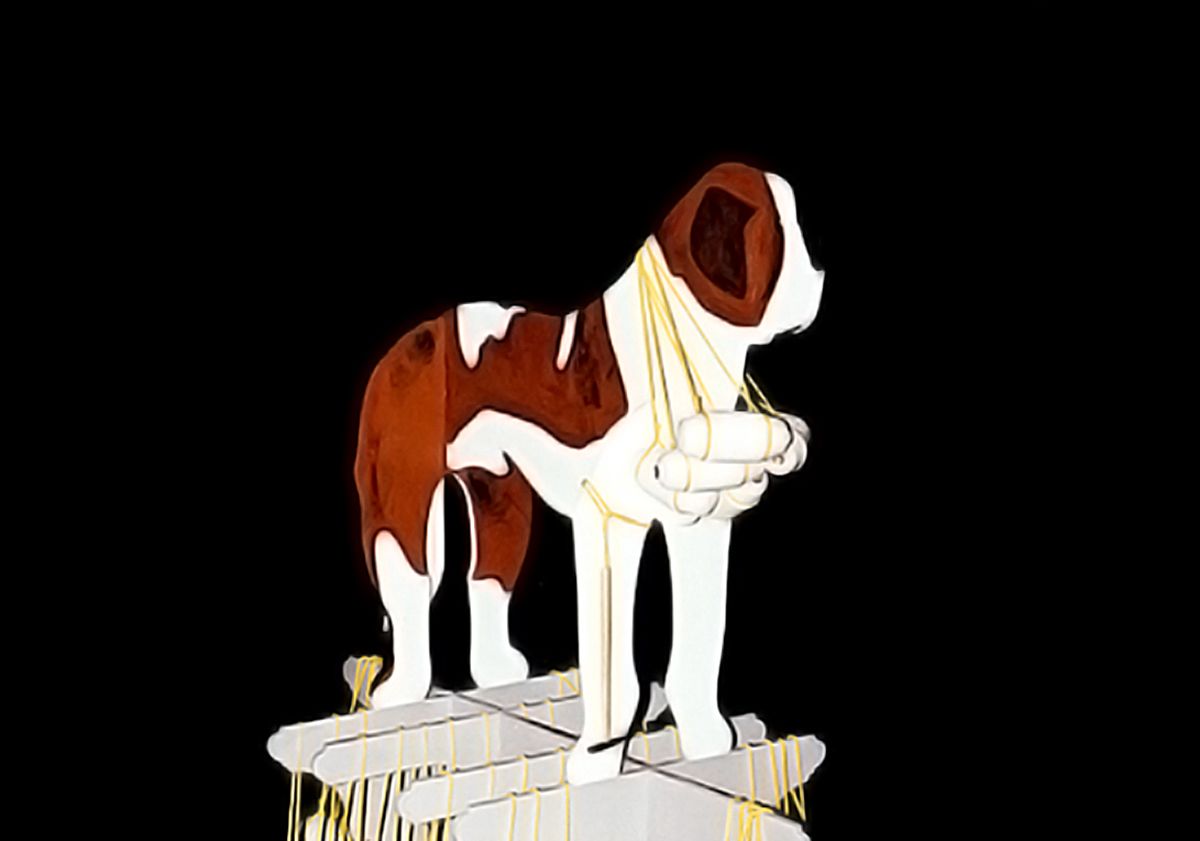
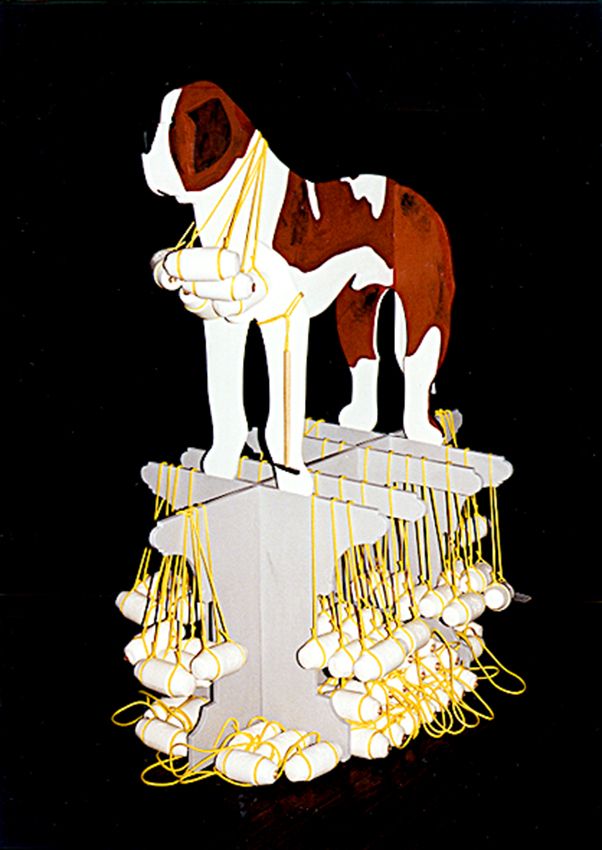
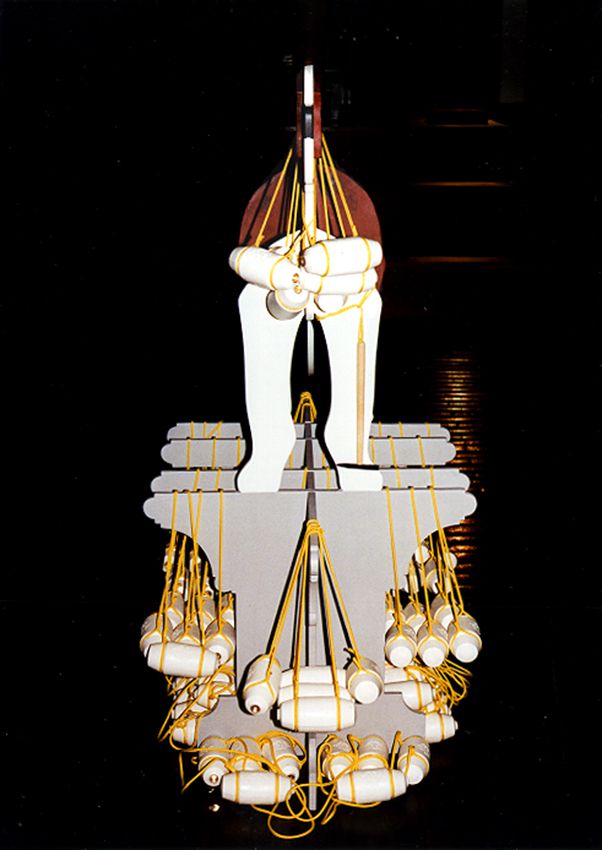
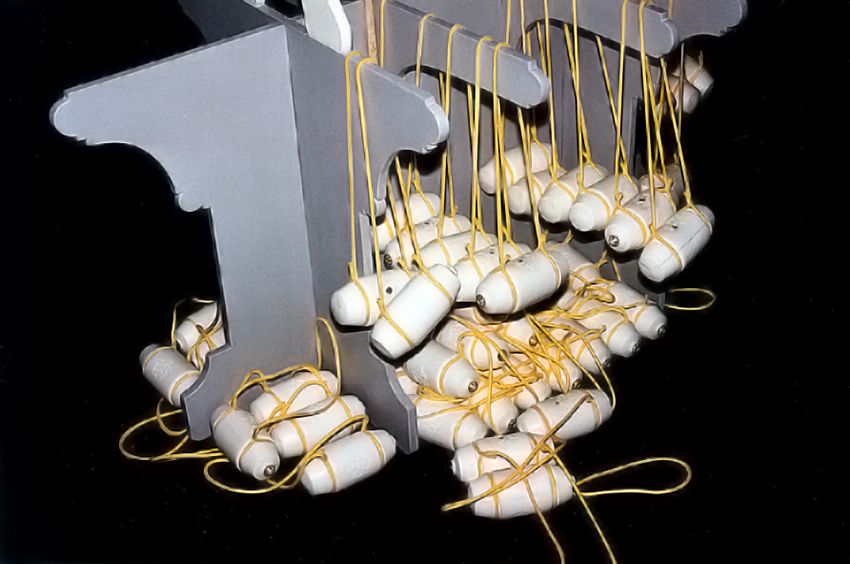
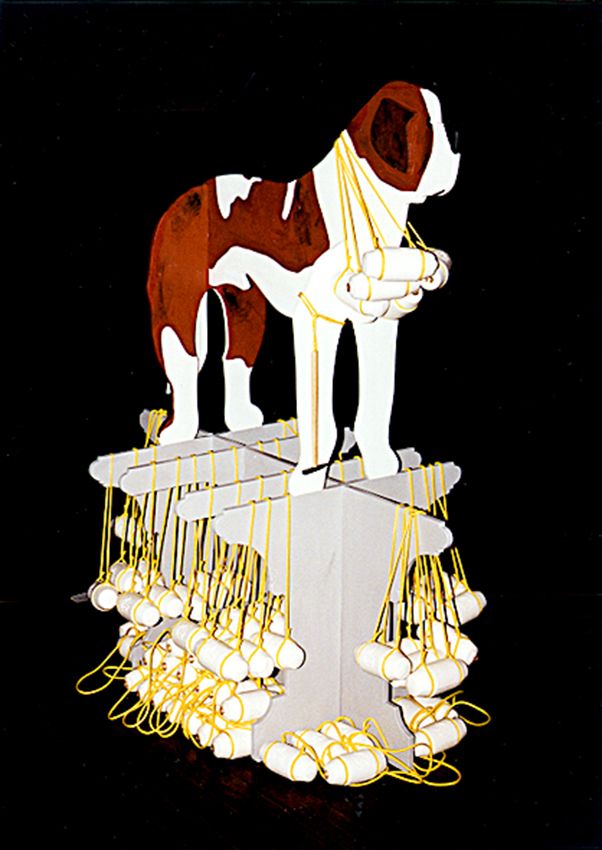
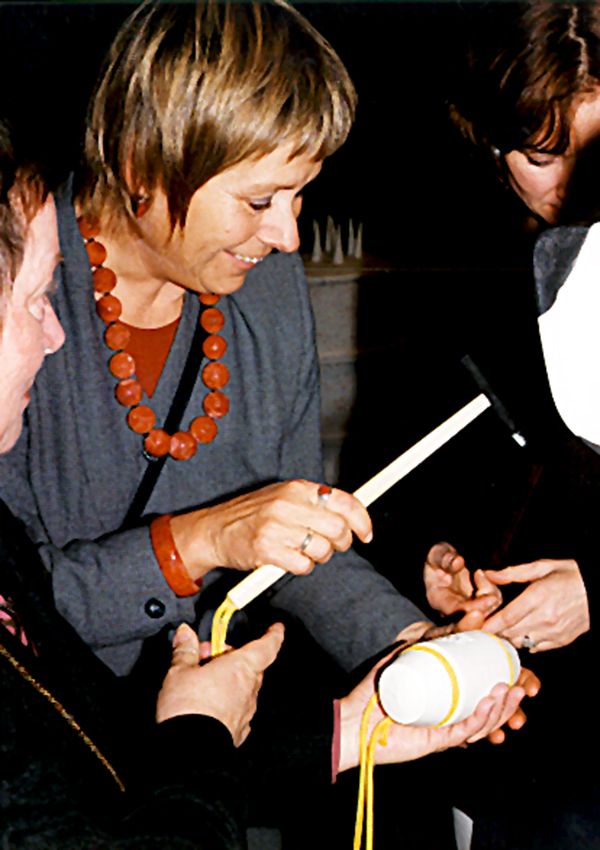
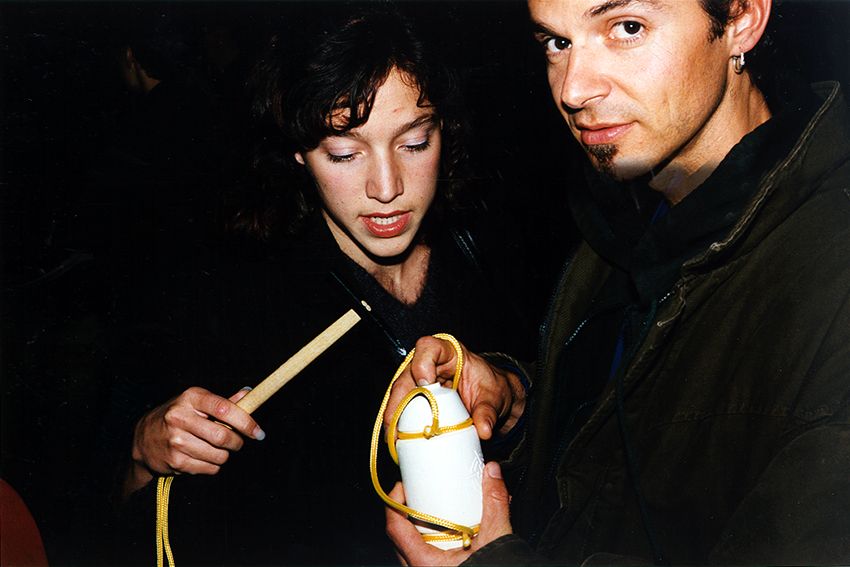
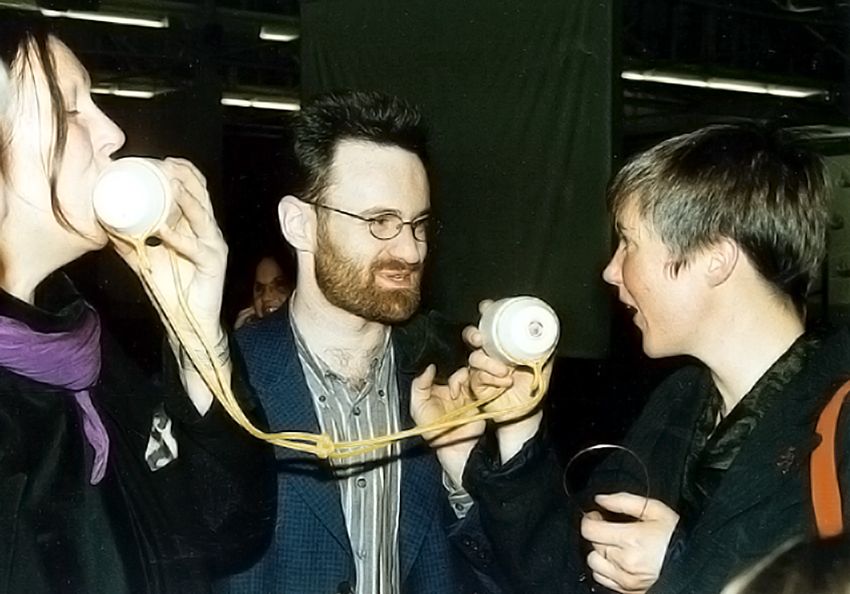
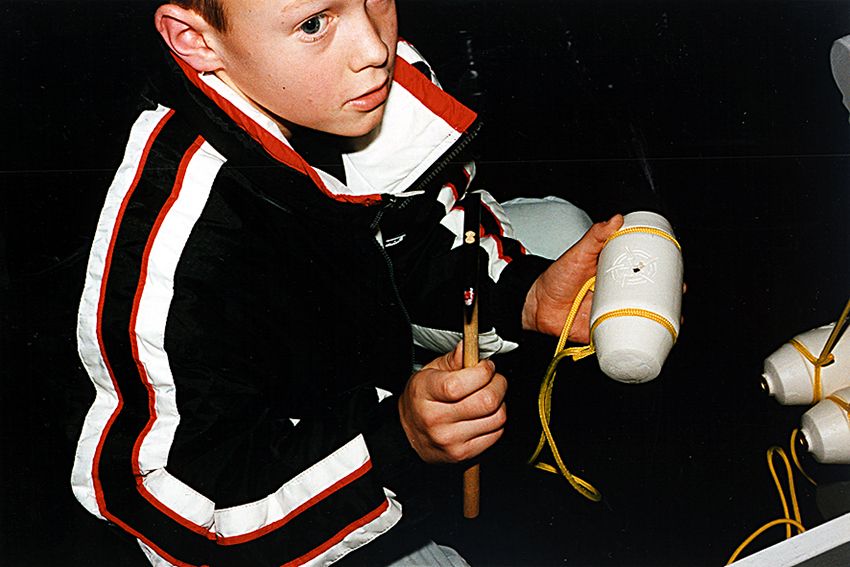
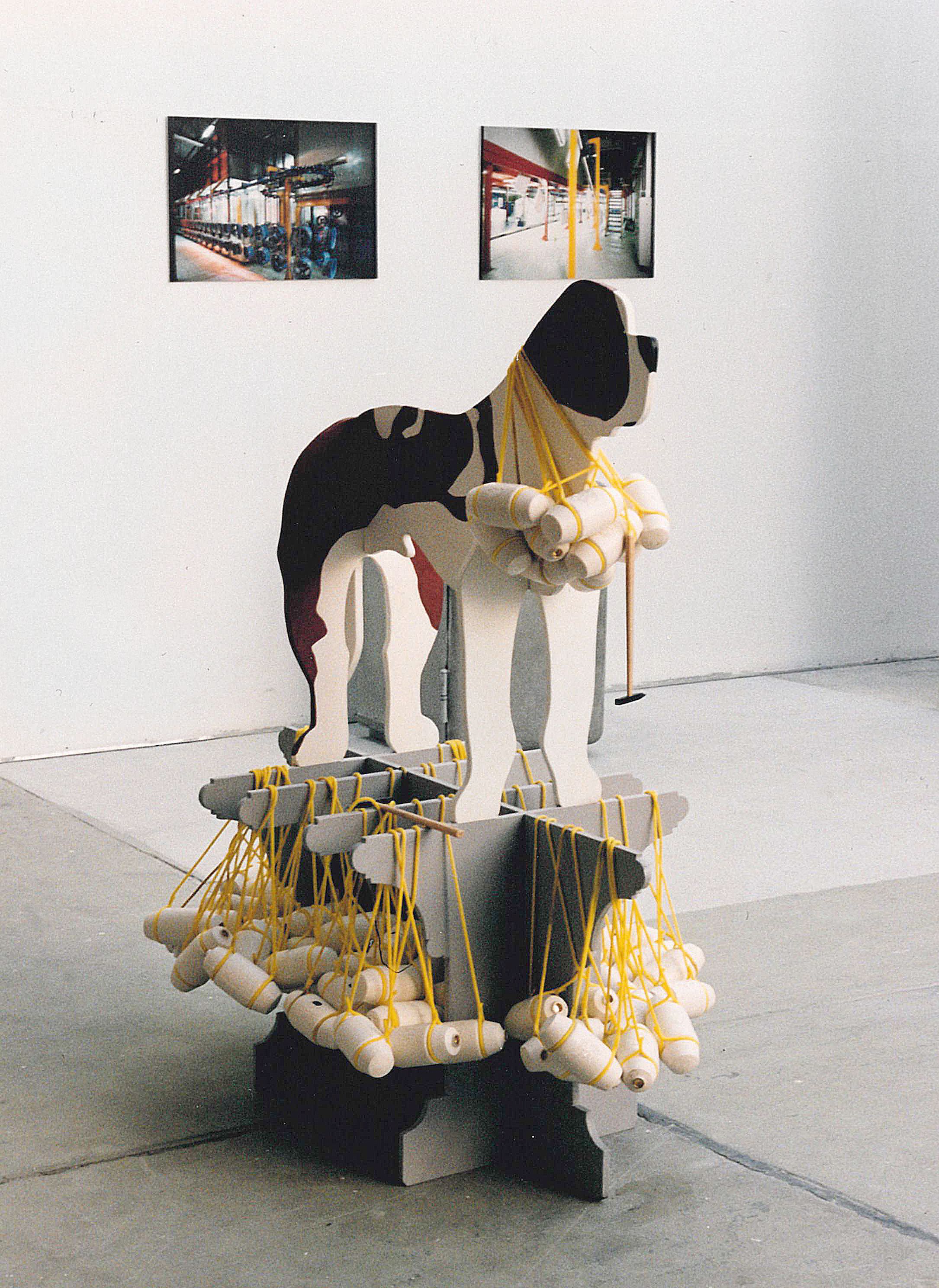
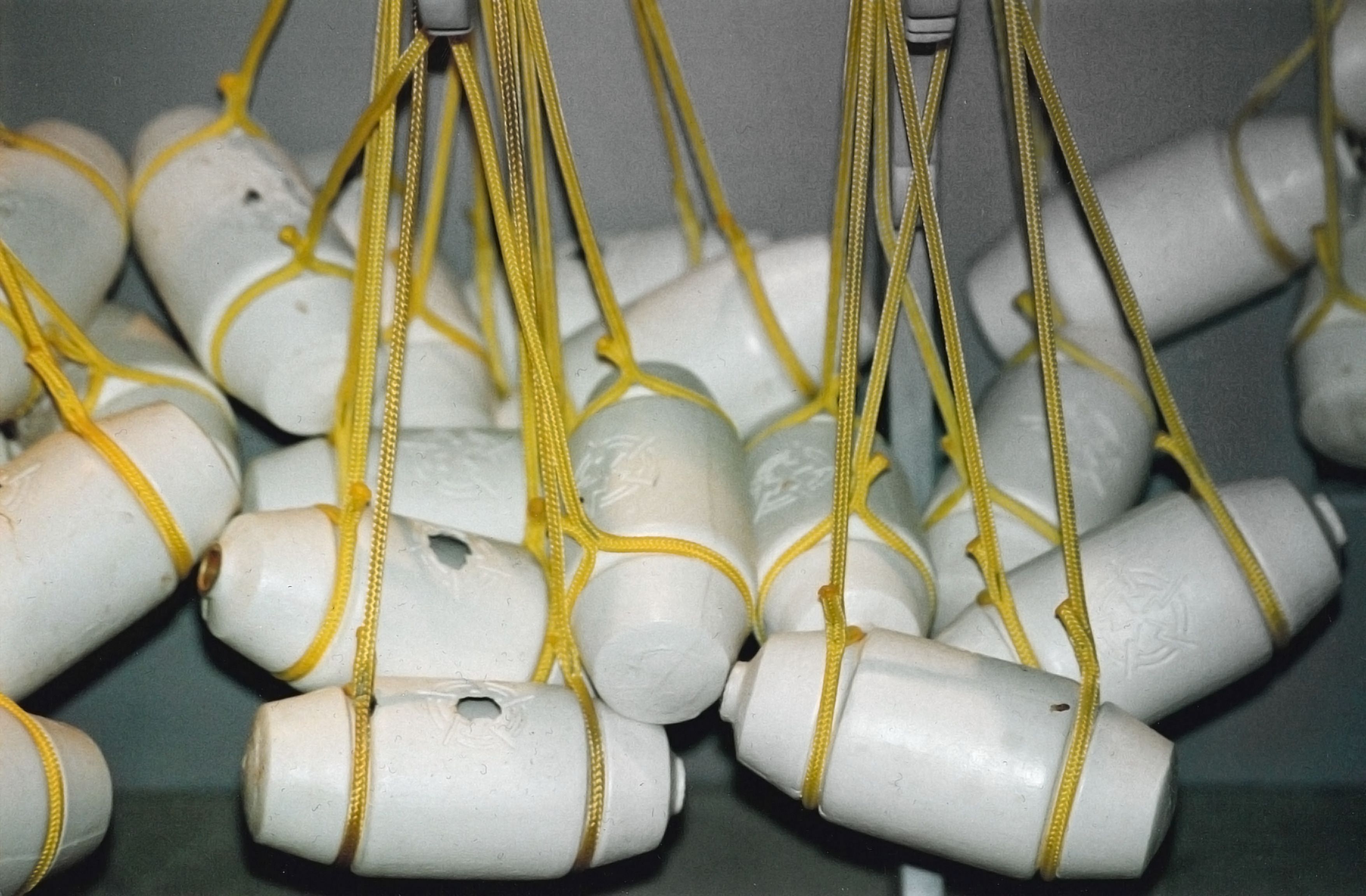
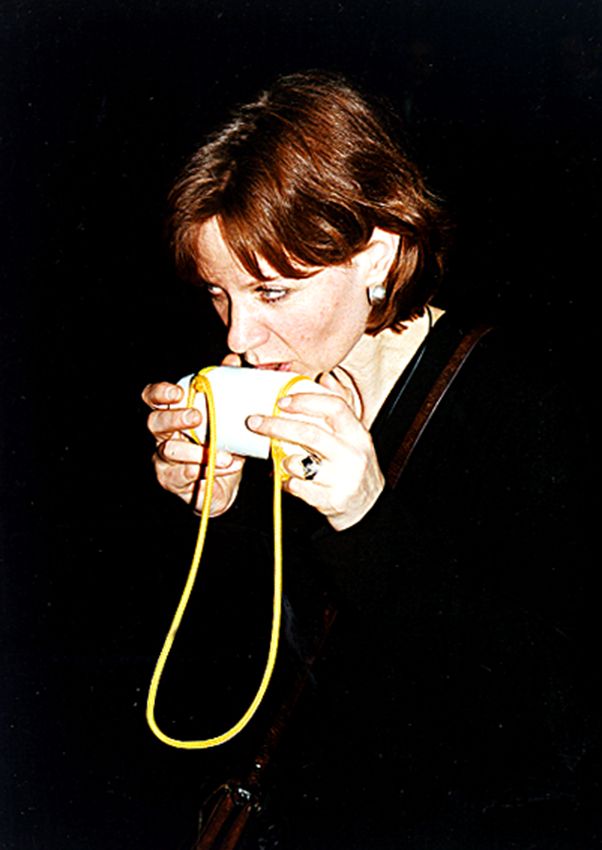
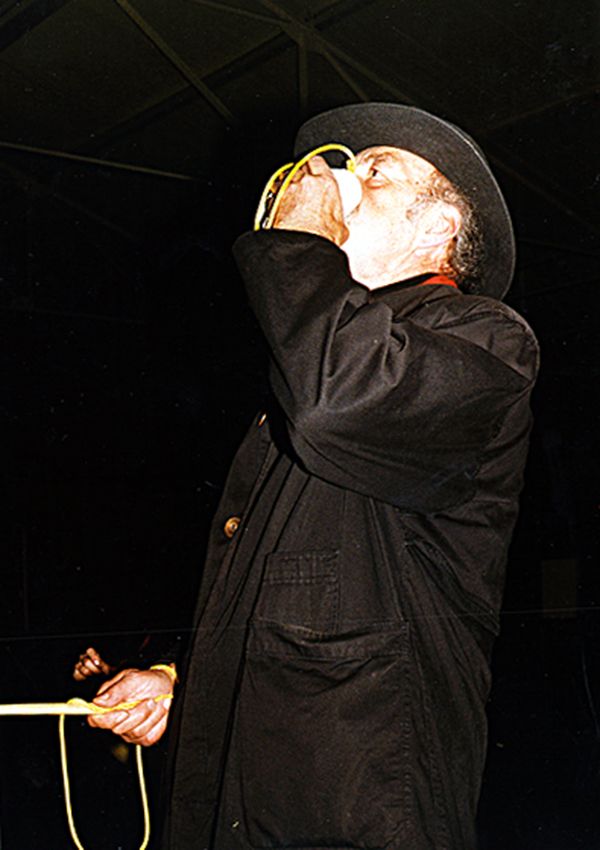
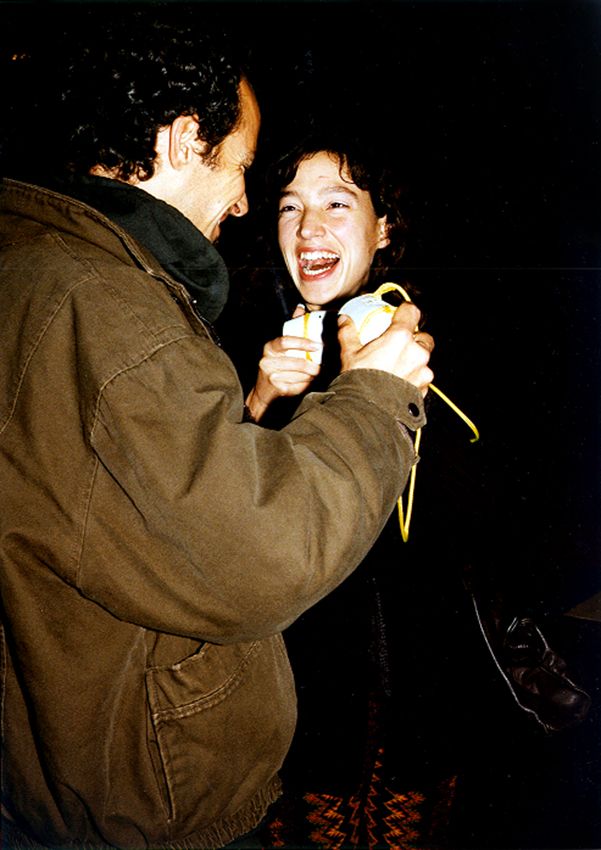
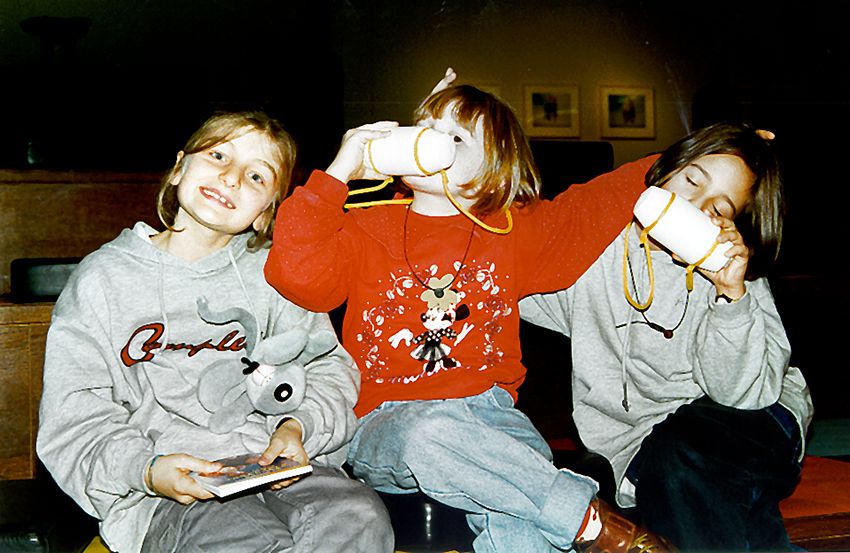
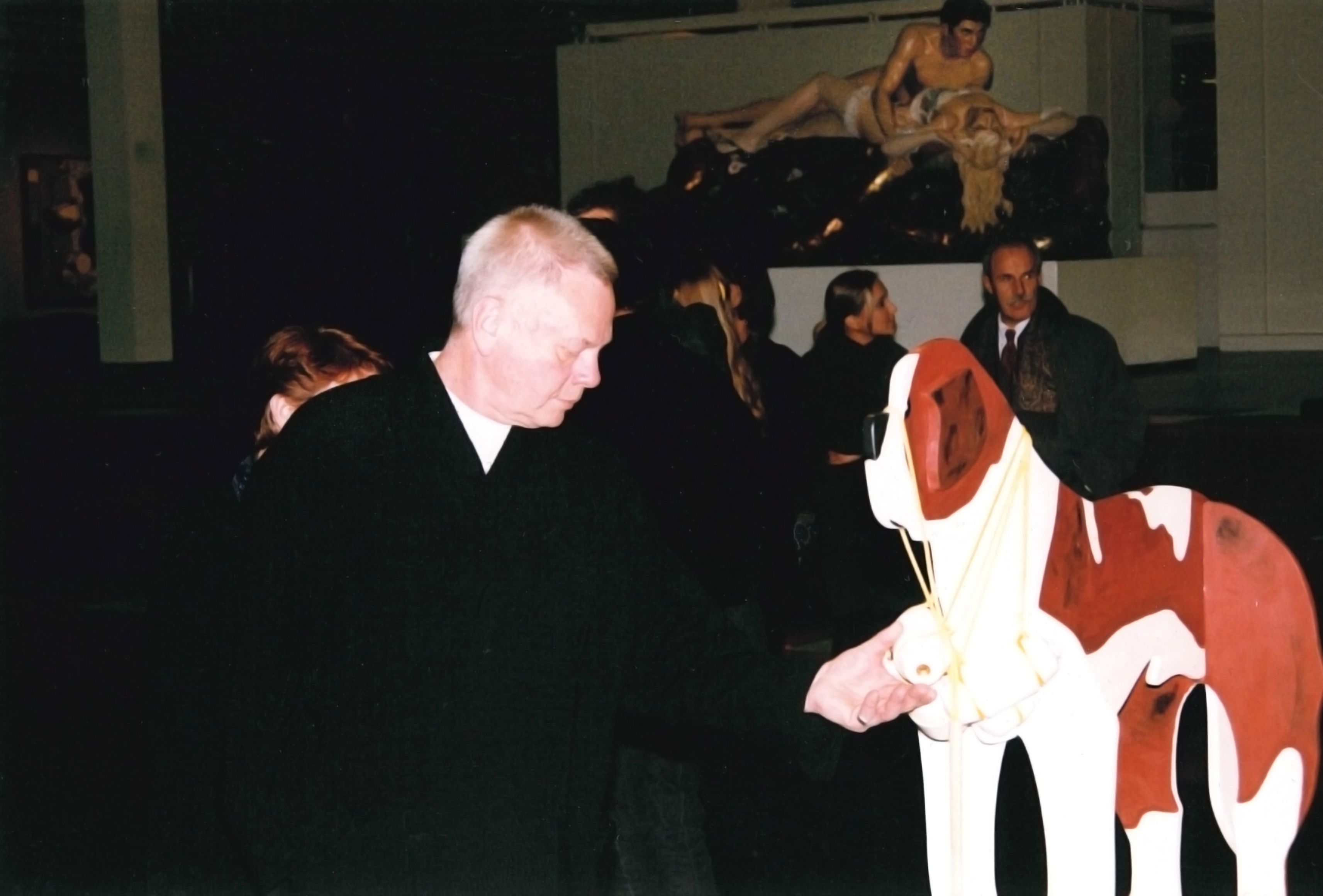
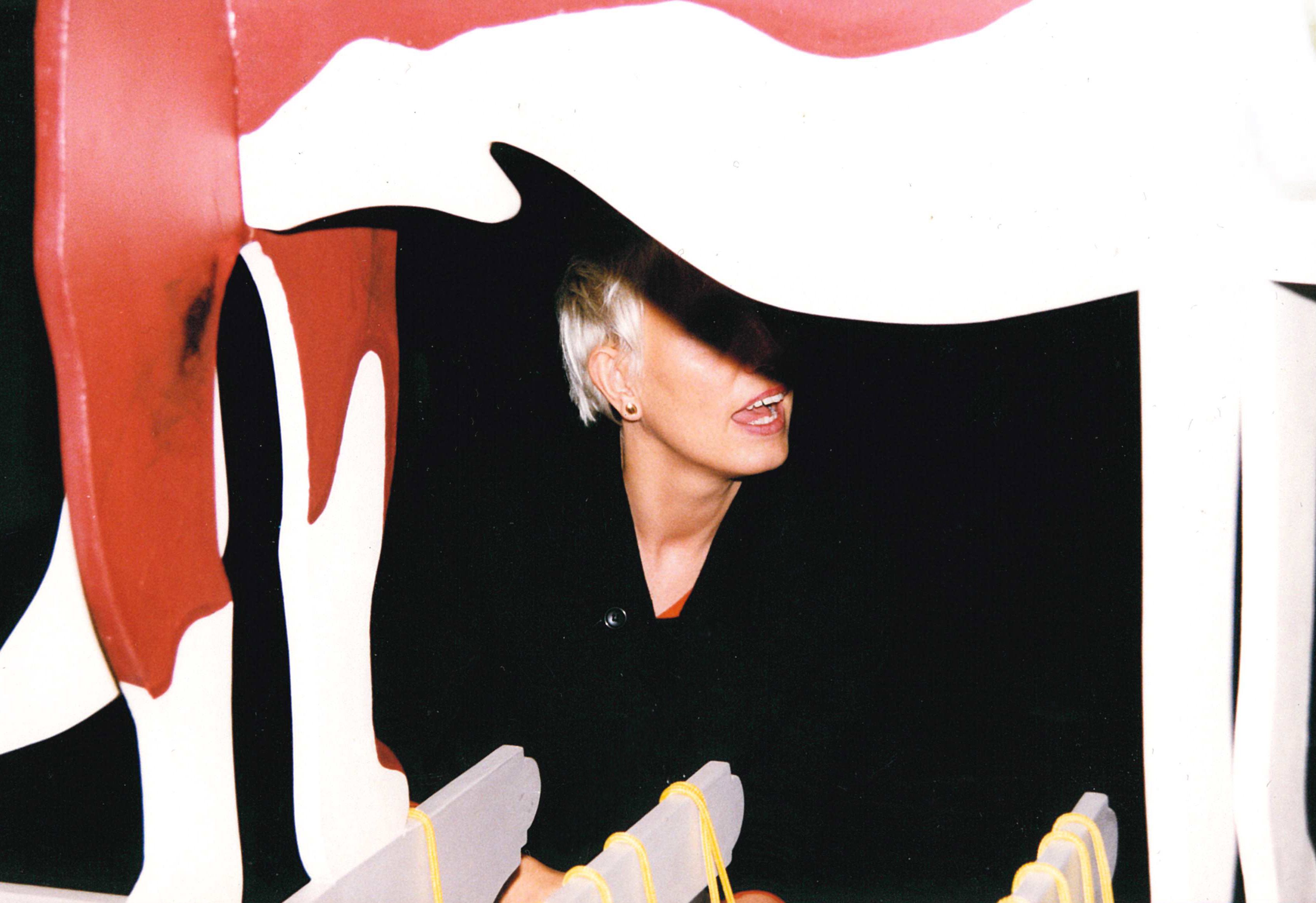
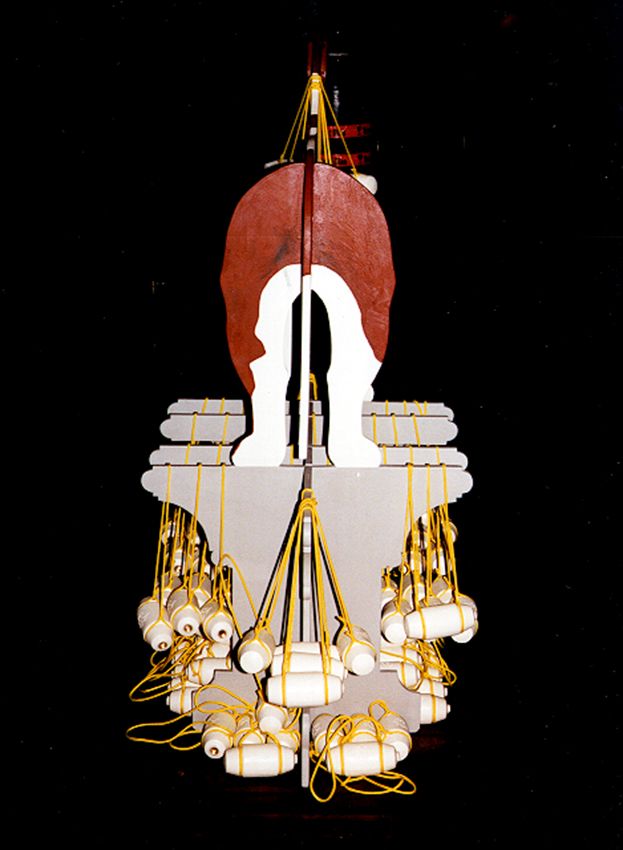
Barry
Material: wood, acrylic colour, cast ceramic, fruit tea
The Augustinian monks, who founded a hospice on the Great St Bernard around 1050, bred St Bernard dogs to help them with their arduous work. They were named after the first prior of the hospice. The dogs assisted the servants in their search for snow victims. They ran ahead of the servants and made a trail in the snow with their bodies. Barry the dog is said to have saved the lives of 2000 people alone. Did his little barrel of rum around his neck help? At the very least, the little barrel tied around his neck was the trademark of all loyal-looking St Bernards - and the legend lives on! So the image of this rescue dog is as much a part of the image of Switzerland as chocolate and cheese, like Heidi and the Matterhorn. Whether yesterday or today, whether high mountains or museum landscape - we all need rescue barrels, and so anyone who comes across the ‘Barry’ installation can feel safe. The object, designed as a plug-in system, depicts a life-size St Bernard dog standing on a plinth. The dog, as the mediator of a ‘rescue concept for museum visitors’, carries 150 rescue barrels made of ceramic, filled with lemon tea and sealed airtight.
The user can now wear a small barrel around his neck during his visit to the exhibition and, if he is thirsty and clever, find the spot marked by an engraved symbol where he can easily smash the barrel with the special hammer provided - to quench both his thirst and his curiosity.